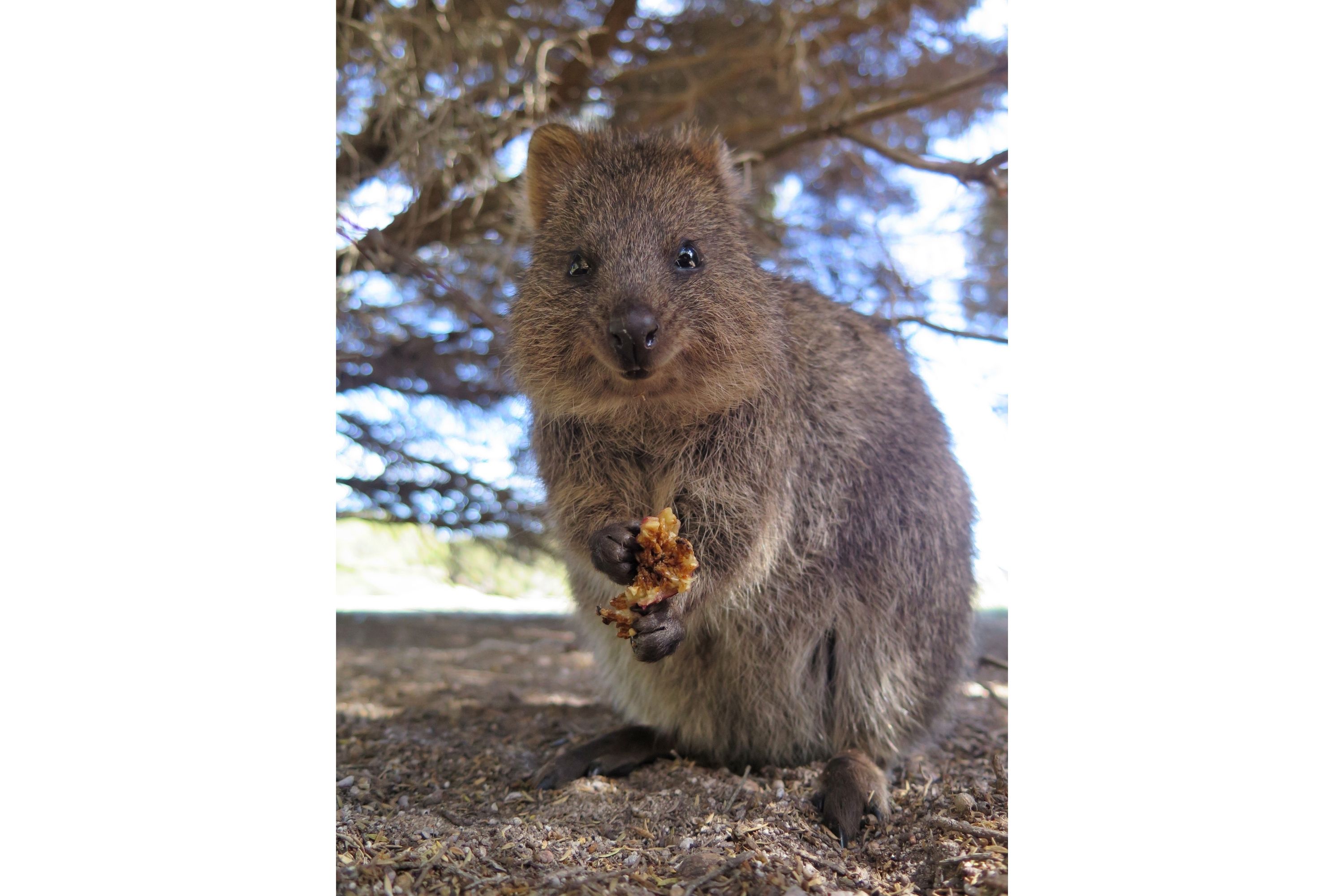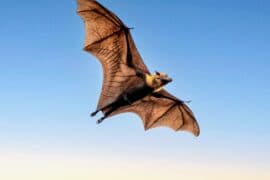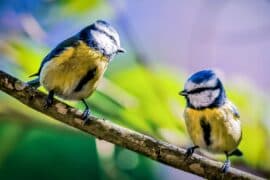Quokka
(Setonix brachyurus)

Description
The quokka also known as the short-tailed scrub wallaby (Setonix brachyurus), is a small macropod about the size of a domestic cat. It is the only member of the genus Setonix. Like other marsupials in the macropod family (such as kangaroos and wallabies), the quokka is herbivorous and mainly nocturnal. Quokkas are found on some smaller islands off the coast of Western Australia, particularly Rottnest Island just off Perth and Bald Island near Albany. Isolated, scattered populations also exist in forest and coastal heath between Perth and Albany. A small colony inhabits a protected area of Two Peoples Bay Nature Reserve, where they co-exist with the critically endangered Gilbert's potoroo. A quokka weighs 2.5 to 5.0 kg (5.5 to 11 lb) and is 40 to 54 cm (16 to 21 in) long with a 25-to-30 cm-long (9.8-to-12 in) tail, which is quite short for a macropod. It has a stocky build, well developed hind legs, rounded ears, and a short, broad head. Its musculoskeletal system was originally adapted for terrestrial bipedal saltation, but over its evolution, its system has been built for arboreal locomotion. Although looking rather like a very small kangaroo, it can climb small trees and shrubs up to 1.5 metres (4 ft 11 in). Its coarse fur is a grizzled brown colour, fading to buff underneath. The quokka is known to live for an average of 10 years. Quokkas are nocturnal animals; they sleep during the day in Acanthocarpus preissii, using the plants' spikes for protection and hiding. Quokkas have a promiscuous mating system. After a month of gestation, females give birth to a single baby called a joey. Females can give birth twice a year and produce about 17 joeys during their lifespan. The joey lives in its mother's pouch for six months. Once it leaves the pouch, the joey relies on its mother for milk for two more months and is fully weaned around eight months after birth. Females sexually mature after roughly 18 months. When a female quokka with a joey in her pouch is pursued by a predator, she may drop her baby onto the ground; the joey produces noises which may serve to attract the predator's attention, while the mother escapes. The quokka was first described by Dutch mariner Samuel Volckertzoon when he wrote of sighting "a wild cat" on Rottnest Island in 1658. In 1696, Dutch explorer Willem de Vlamingh mistook them for giant rats, naming the island 't Eylandt 't Rottenest, which means "the rat nest island" in Dutch.
Taxonomic tree:







